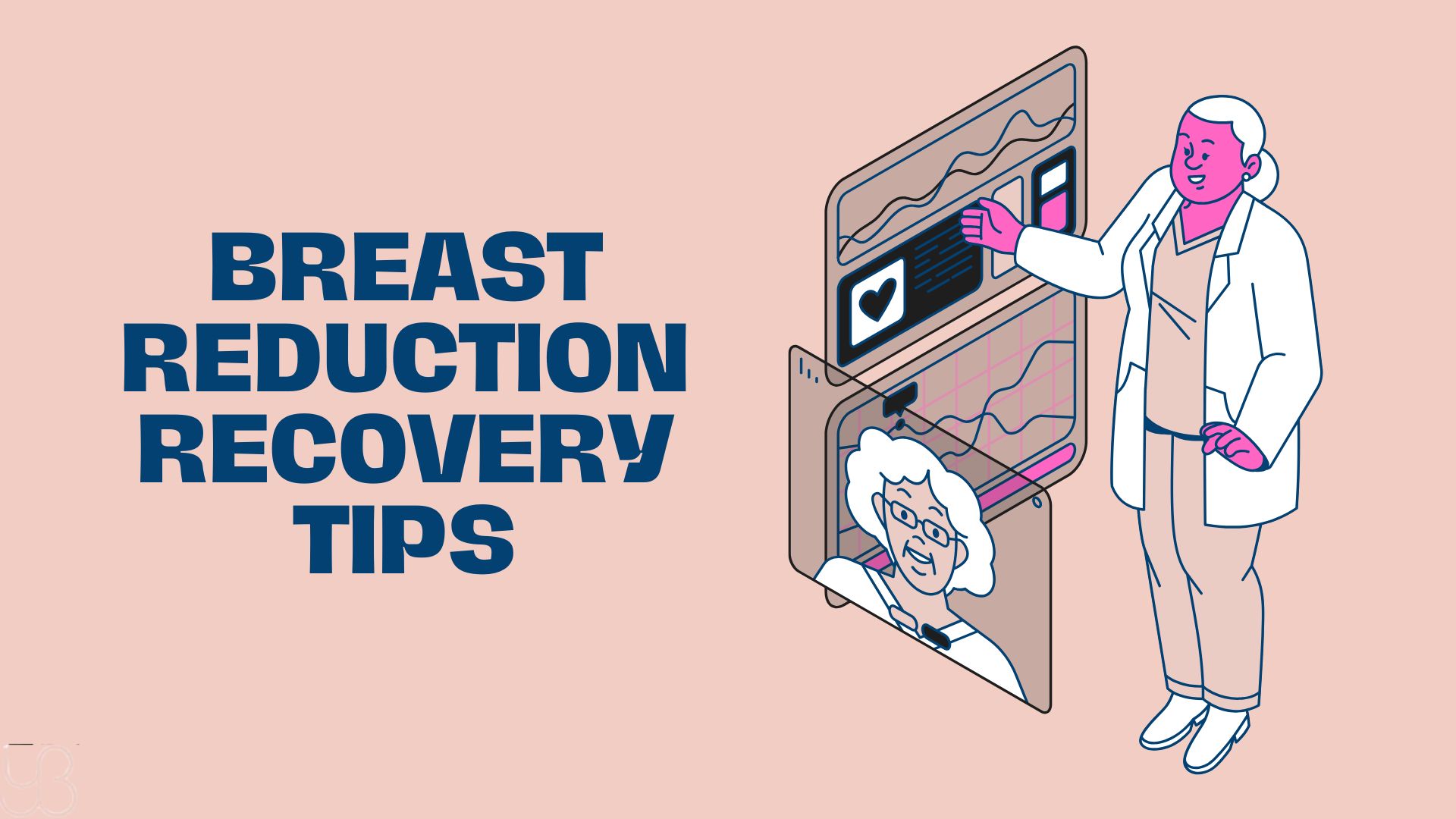Introduction
Breast reduction surgery, also known as reduction mammoplasty, is a life-changing procedure for many individuals. Whether you're seeking relief from back and neck pain, wanting to enhance your mobility, or simply looking for a more proportionate body shape, the surgery can bring significant benefits.

We have covered the essential recovery tips to help you manage your post-operative journey with ease, comfort, and confidence.
1. Follow Your Surgeon’s Instructions
Your surgeon will provide you with detailed post-operative care instructions, including how to manage your incisions, which medications to take, and when to attend follow-up appointments. Be sure to follow these instructions meticulously, as they are designed to reduce complications and promote healing.
2. Rest and Take It Easy
Rest is crucial in the early days of recovery. Your body has undergone a significant procedure, and it needs time to heal. Take time off work (usually 1–2 weeks) and avoid any strenuous activities. You should focus on allowing your body to rest, avoiding any lifting, pulling, or pushing movements that could strain your chest area.

3. Wear Your Surgical Bra
After surgery, you will be given a special post-surgical bra that helps to support your breasts, reduce swelling, and promote healing. Wear it as directed by your surgeon, usually for several weeks post-op. This bra offers much-needed support during the healing phase and can significantly affect your final results.
4. Take Care of Your Incisions
Proper wound care is vital for preventing infection and minimizing scars. Keep your incision sites clean and dry. Your surgeon may recommend specific ointments or dressings to promote healing and reduce scarring. Avoid getting the incisions wet until you’ve been cleared to shower, which is usually after 48 hours, though it varies.
5. Manage Pain and Swelling
You will likely experience some discomfort, swelling, and bruising in the days following surgery. Your surgeon will prescribe pain medication to help manage this. Use your medication as directed, and don’t hesitate to discuss any concerns you have about pain control.

6. Avoid Strenuous Activities
While it might be tempting to return to your usual routine, avoid heavy lifting, vigorous exercise, and any movements that strain your upper body for at least 4–6 weeks. Gradually ease back into activities like walking, which can help improve circulation and reduce the risk of blood clots.
7. Watch for Any Signs of Infection
It's essential to monitor your recovery and be on the lookout for any signs of infection, such as:
- Redness or warmth around the incision area
- Increased pain or tenderness
- Excessive swelling
- Fever or chills
- Pus or discharge from the incision site
8. Eat a Balanced Diet
Proper nutrition can significantly impact your recovery. A diet rich in protein, vitamins, and minerals helps promote tissue repair and reduces inflammation. Hydration is equally important, so drink plenty of water.

Consider foods like lean meats, leafy greens, fruits, and whole grains to support healing. Avoid processed foods high in sodium, which can contribute to bloating and slow down recovery.
9. Embrace Patience and Positivity
Recovering from breast reduction surgery takes time. Swelling and bruising can last several weeks, and it may take a few months for your final results to fully emerge. Be patient with your body and understand that healing is a gradual process.
It’s also normal to experience some emotional ups and downs during recovery. The physical changes, combined with temporary limitations, can feel overwhelming. Give yourself grace, and lean on your support system for encouragement.
10. Attend Follow-Up Appointments
Your follow-up appointments with your surgeon are essential. These check-ups allow your surgeon to assess your healing, address any concerns, and provide guidance on transitioning back to normal activities. Don’t skip these appointments, as they play a critical role in ensuring your recovery is on track.
Conclusion

Recovering from breast reduction surgery cost South Africa is a journey that requires patience, self-care, and a positive mindset. By following these recovery tips and adhering to your surgeon’s advice, you can ensure a smooth healing process and enjoy the transformative benefits of your procedure. Remember, every patient’s experience is unique, so listen to your body and take the time you need to recover fully.